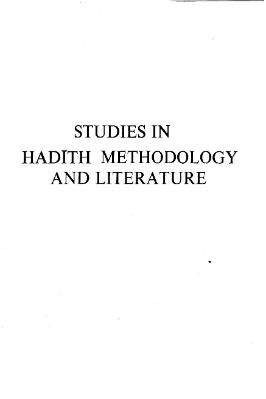
| shlae | |
| 129 | |
| 4.69 Mb(s) | |
|
|
| Malay | |
| Click to Read the Book Online | |
| PDF Direct Download Link |
shla_e.pdf
To read more about the Shlae Pdf bookClick the download button below to get it for free
Excerpts from the Book – Text format
22 STUDIES IN HADiTH AND LITERATURE Akhbaranأ¤: is used to denote learning through the second method, though some Of the scholars used these two terms interchangeably. Anb’anأ¼ is used in Iiizah and munأ¼wala, and sometimes even Haddathanأ¼ Ijiza!an, is used in Muniwala. Sami’ah: e—it is used in the learning through the first method only. ‘An: it can be used in all the methods. All these terms are not 01 equal value.
Sanji’tu, I-taddathantit uadda• ‘hani, Akhbavanأ¼ and Akhbavani the most sulkrior, though the author- ities differ about which is bvst among them. However, ‘an is very inferior. terms should not be changed in copying. ‘An is not explicit for direct contact between narrators. therefore in case Of a narrator who was accused Of practising Tadlis;•’ it might cause the l!adith to be judged a weak one.
Certificate Of Reading A regular record Of attendance was kept and after the reading Of a book was completed. a note was written either by the teacher or one Of the famous scholars in attendance. This gave details Of the attendance, e.g. Who listened to the complete and Who joined partially, What part they read and What part was missed by them, giving dates and the places. If an attendant was under five years his age was mentioned With the title whi(‘ll meant ‘ •attended.
If hc was five or more he was mentioned as a regular student. At its conclusion the book was usually signed by the teacher or by some famous attending scholar. In many cases, this certificate stipulated that no further entry could be made in the which had been completed.to. This certificate was called Tabأ¶,’tl by the Muhaddithin. Education in hadith was free. Only a few scholars charged some money but they were denounced for this practice.
The students’ relations with their teachers were based on reverence and respect. Some of them used to help or serve their tutors, but there were tutors who did not accept any kind Of service lest it might be taken as service in return for teaching. In many cases, the teachel* even helped their students financially, and it was quite common to offer meals to them. A noteworthy phenomenon of the education in hadith was thc continuous traveling Of students and schol• ars to collect a/!أ¤dith.
Perhaps journeying was an essential part of student- ship. A1-Khatib al-Baghdأ¤di wrote a book on the subject”. 9. See for example Ibn Wahb, Jimi’, p. 40, 77. 10. For explanation of Tadlis, see below, p. 65 l. See Khatib,
 Don't Miss out any Book Click Join OpenMaktaba Telegram group
Don't Miss out any Book Click Join OpenMaktaba Telegram group